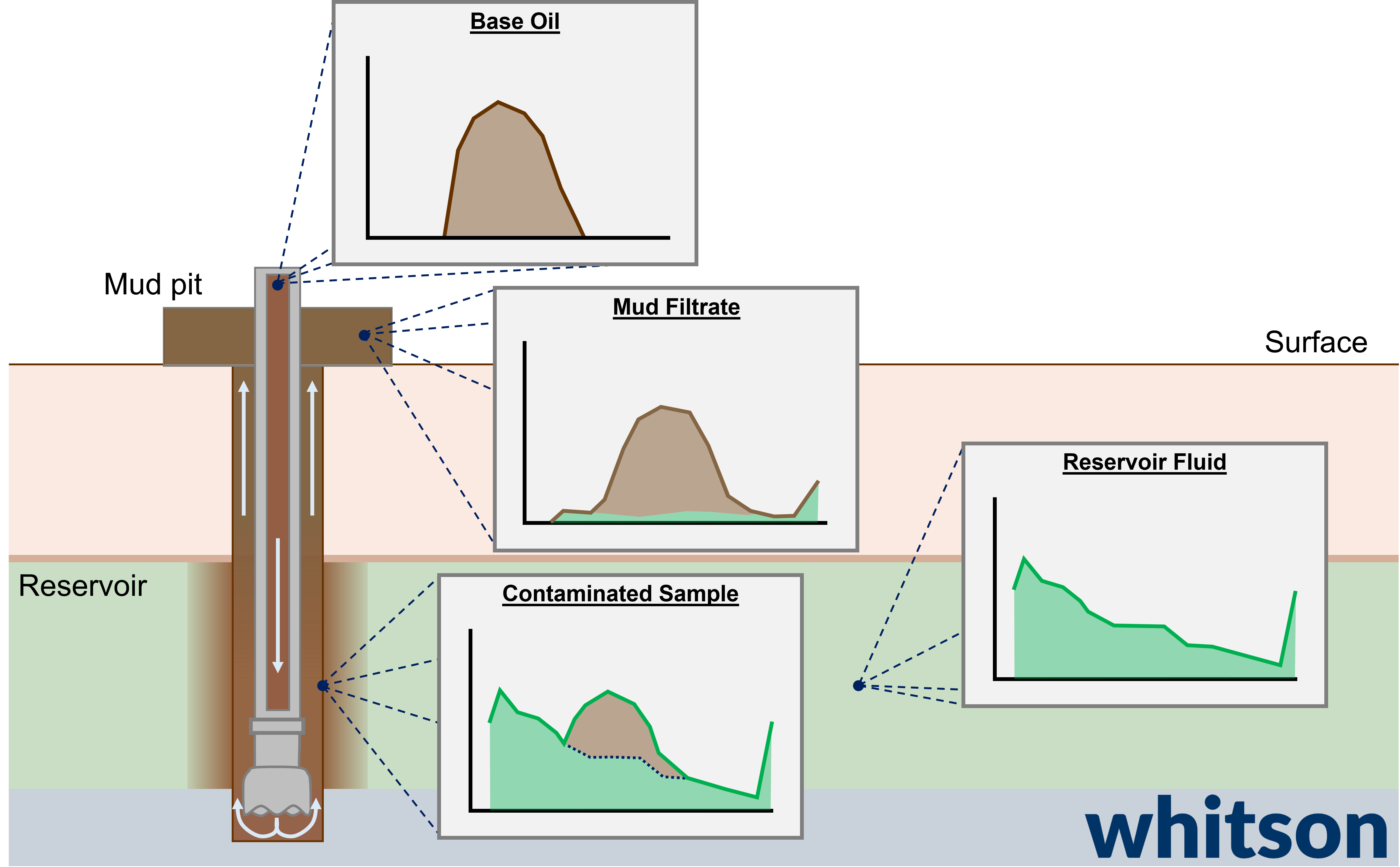Oil-Based Mud Decontamination
Oil-based mud contamination results from the mixing of hydrocarbon oil-based muds used to keep the over-pressure while drilling. Typical oil-based muds typically contain paraffinic hydrocarbon components ranging from C12 to C20 (or heavier) depending on the vendor and the use-case for the mud. Typically, the distribution of mud components is a bell-shaped curve with a peak around C15 or C16.
Laboratories should always provide the mud composition, but it is not uncommon for the composition not to be reported. It is the job of the operator to ensure that the laboratory provides this data, the lack of this data can have a significant impact on the decontamination process, and as will be presented in the following sections will impact both the model development and fluid initialization.
There are typically two types of mud compositions reported. The first and least common is the base mud composition, which is the uncontaminated mud. Yes, uncontaminated mud that has not been in contact with the reservoir fluid. This should be provided by the vendor of the mud or measured separately in the laboratory. The base mud composition is the best choice to use in decontamination, since you are not decontaminating the reservoir fluid components. The second and more commonly reported mud type is the mud filtrate composition. This is the produced mud composition, typically sampled at surface from the mud pit. The mud filtrate is contaminated with the reservoir fluid, and if used to perform decontamination, will also – incorrectly – subtract these reservoir components (especially the residual component – typically C30+ or C36+).

Figure 1 - Overview of the process of contamination for downhole samples in wells drilled with oil-based mud.